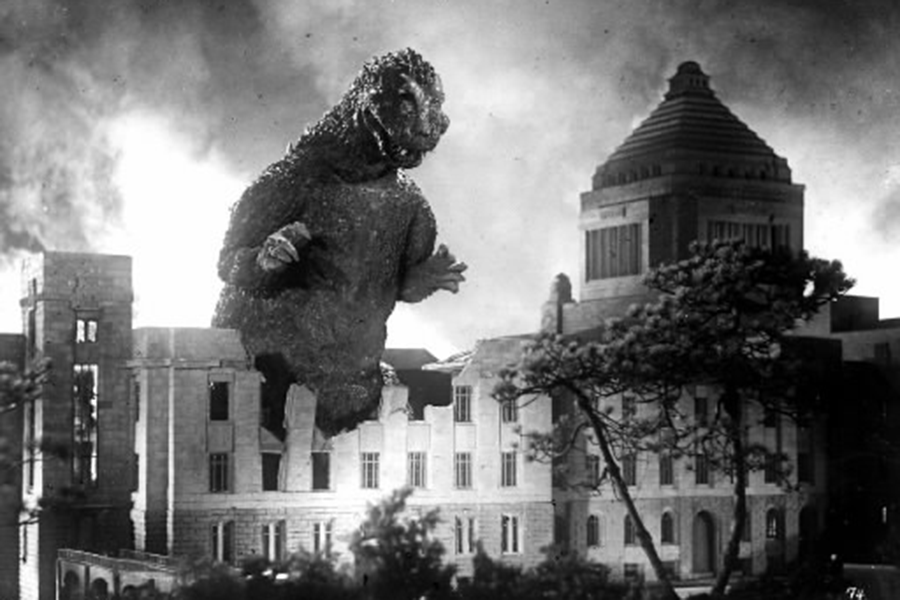How a bomb, an ape, and a brawl shaped Godzilla co-creator Eiji Tsuburaya
Loading...
Eiji Tsuburaya created a worldwide phenomenon out of miniature cities and monstrous costumes. The Japanese director and cinematographer helped bring Godzilla, Mothra, and Ultraman to life with his innovative style of special effects.
But these deeply influential characters didn't exist until Mr. Tsuburaya was well into his 50s. It took three key events – a giant ape, a fistfight, and an explosion – for Tsuburaya to master kaiju and to excite moviegoers around the world.
Before Godzilla stomped through Tokyo, King Kong scaled New York City. Tsuburaya said the giant gorilla ensorcelled him. "I never forgot that movie," he admitted in 1954, two decades after "King Kong" hit theaters. "I thought to myself, 'I will someday make a monster movie like that.' "
While "King Kong" and "Godzilla" are ostensibly similar, the two films used very different techniques. Hollywood's monster movie relied on 18- and 24-inch models made of metal, foam, latex, and animal fur to pull off its action scenes. The crew employed stop-motion tricks by adjusting the models frame by frame to create the illusion of movement.
Twenty years later, Tsuburaya pioneered a new strategy. He dressed up actors in beastly rubber costumes and filmed them crashing through cardboard cities.
Designing tiny skyscrapers, airplanes, and power lines for monsters to rampage through came easily to Tsuburaya. He had been a skilled model maker since childhood. The first successful plane flight in Japan took off while Tsuburaya was 9 years old.
"This triumph sparked young Eiji's imagination, and with no reference materials other than a newspaper article and its accompanying photograph, he began building model airplanes out of wood, a hobby he would continue throughout his life," writes August Ragone in his biography, "Eiji Tsuburaya: Master of Monsters." "Tsuburaya became something of a local celebrity due to the verisimilitude and skill of his work, and he was interviewed by a local newspaper, which dubbed him a 'child craftsman.' "
By age 18, he found a job at Utsumi Toy Manufacturing Company, designing and building prototype toys. During a company holiday party in 1919, a fight broke out between his colleagues and another group. "Tsuburaya decided to stay clear of the brawl," writes Mr. Ragone. "This proved to be a defining moment in his life. While watching the fight, he began talking to a man from the other party who was impressed at Tsuburaya's levelheadedness." They got to talking about motion pictures, a new art form that had recently popped up in Japan and quite excited Tsuburaya. Little did he know, the other man was famed director Yoshiro Edamasa, who offered him a job on the spot.
Tsuburaya rose through the Japanese film industry, first as a cameraman, then as a special effects artist, and eventually as a director of propaganda films during World War II.
The final key event in the creation of Godzilla and the Tsuburaya style came just at the end of World War II. In 1945, the American military dropped atomic bombs on Hiroshima and Nagasaki. The explosions surpassed anything humans had unleashed before. "Godzilla" producer Tomoyuki Tanaka said that, "The theme of the film, from the beginning, was the terror of the bomb. Mankind had created the bomb, and now nature was going to take revenge on mankind." This revenge came in the form of a massive lizard, a creature that – like the bomb – could not be stopped by conventional weapons.
The concept of Godzilla grew out of a collaboration between the filmmakers, but many people attribute the on-screen presence of Godzilla to Tsuburaya and his team of special effects artists. Just like King Kong, Godzilla became a worldwide cultural icon. But the mighty beast might have never existed if not for a giant ape, a fistfight, and an explosion.







